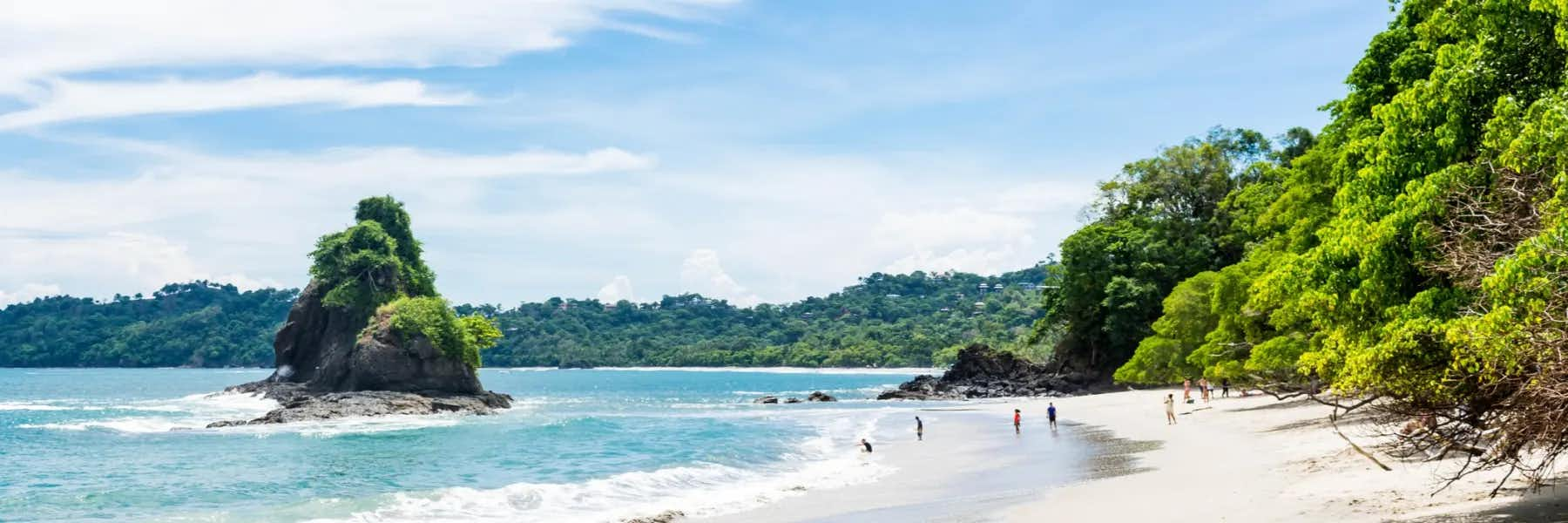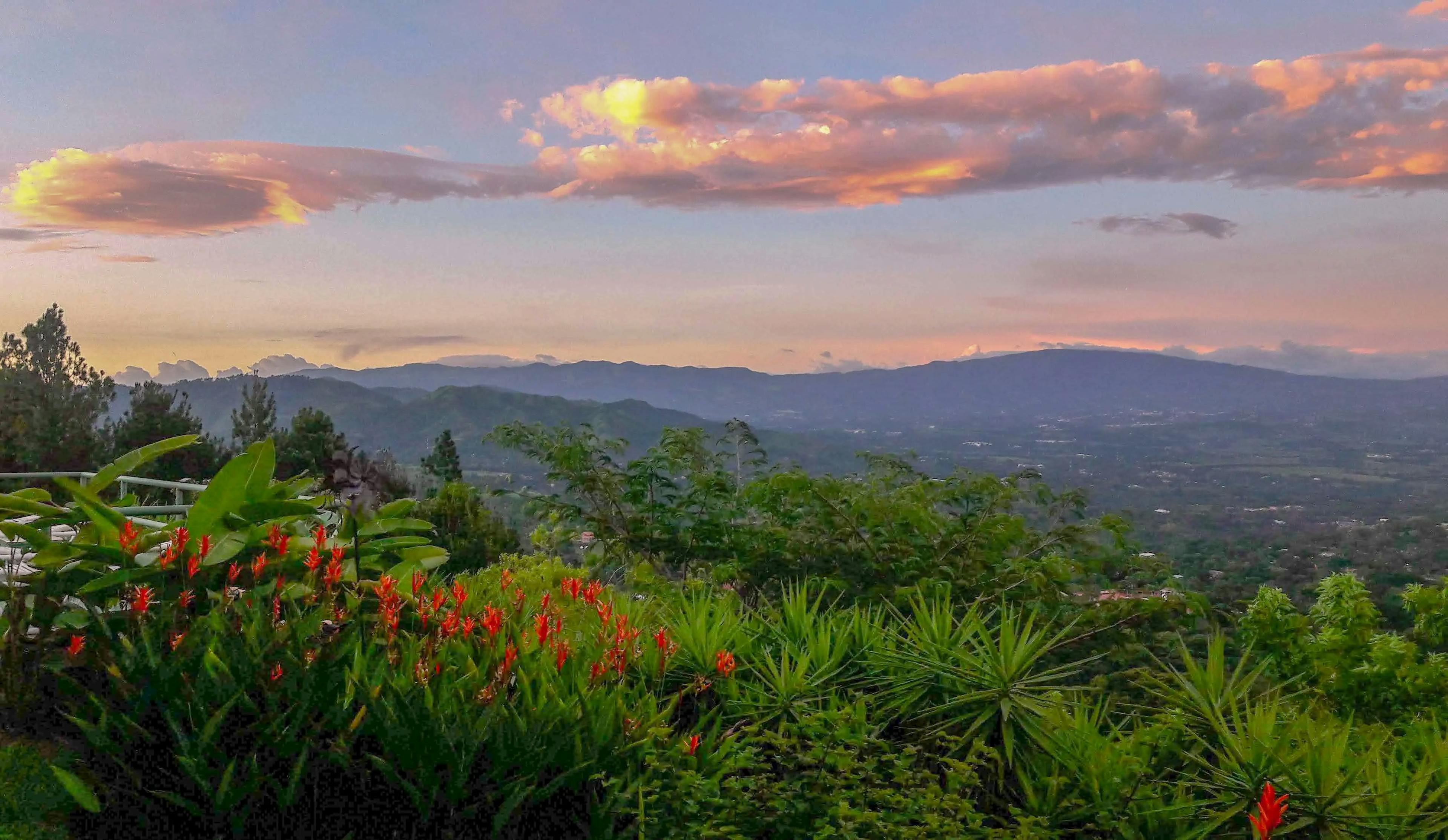Video Transcript
This is Kathleen Evans, International Living’s Costa Rica correspondent. Thanks for joining me today. We're going to talk about the traditions and culture in Costa Rica.
Food
I'd like to start with food. Why not? Everybody loves food, right? Sure…Costa Rica isn't deep in the foodie roots. Like other countries, you know, for example, we're making Italian food tonight or we're going out for Thai food. You don't really hear people going out for Costa Rican food. However, that doesn't mean the food here isn't amazing. It's very fresh and abundant. If you think about it, how many tropical fruits are available in this country and vegetables? We have boneless seafood because we have the Caribbean coast. We have the Pacific Coast. And we have fresh lakes and rivers. We also have a great beef-growing culture here, as well as some of our own rice. This is even produced in Costa Rica.
So when you talk about food in Costa Rica, there is a great tradition called le feria, or basically a farmer's market. And you find these areas all across Costa Rica, in the big cities, in the villages, in the towns, and they happen weekly. And it's a great opportunity for farmers to bring farm-to-market fresh produce to the people in town. And it's a great social opportunity, too. So it's not just a produce market.
You’ll find deep seafood available, especially in the coastal areas. You will also find spices for sale, coffee, sausage, baked goods, arts and crafts. And some of them even have snack booths where you can stop and get little snacks and enjoy time with the other people in your community.
So another tradition is soda. And you may have heard this term before. These are small family-owned restaurants. And you find them all over Costa Rica, roadside, touristy places. And they're absolutely fantastic. They're cheap and sometimes in some of the villages, you could get two meals and a drink for $10. And there's two typical plates that you'll find at sodas. One of them is called the casado Plate and casado in Costa Rica means married. No, we're not exactly sure where the name came from. Some theories are that it's all of the different food groups married on a plate. And then it's also, well, the working man who's away from home. We've made a casado plate for the married man who's working far from home. And what consists on this plate is typically a protein. So you will see either fish, chicken in some places, pork or beef. And then you've got rice, beans. Typically a small salad that might just be lettuce and tomato, plantains and a tortilla. Very healthy and very filling as well.
Now, another dish that's common and you'll find them. Every soda is arroz con pollo or arroz con camarones which is basically rice with chicken, or with rice with shrimp. But know, it's not just rice and chicken thrown on it. It is actually a lengthy process to make these because you've got tomato, onion, carrot bell, pepper and garlic. Sometimes celery is used in it and various other spices. So it's very filling. Typically it comes kind of in a cone on the plate along with papas fritas or French fries.
Now, another thing to note, even though Costa Rican isn't totally a foodie scene, there are chefs from all around the world who have come here and they're fusing their countries local flavors, along with the food that's abundant here in Costa Rica. And you're seeing lots of new trendy food places that are popping up in normal times in in and around the capital and other popular tourist places here. Now, on the Caribbean side, you've got more of an Afro Caribbean style of cooking. So there they utilize hot chili peppers and coconut milk, things that you'd find typically war on the Caribbean island. So that gives a whole different flavor to Costa Rican food as well.
Art and Crafts
Now, as far as art and culture in Costa Rica, it's something you don't really think about initially. Right. It's fantastic in its natural beauty, the endless beaches, the dynamic waterfalls, the volcanoes, but not quite the unique culture, for example, as the Maya’s or the Aztecs regionally in Central and South America. So you don't see a lot of native artists.
However, there are some notable exceptions of these traditions that have been passed down through the centuries.
First one of note is pottery of the Nicoya Peninsula. Now this pottery is painstakingly made with earthenware powder mixed with a special sand and water and formed on a pottery wheel or with with tools. Now, ceramics of Santa Anna are another notable art form here, and there are dozens and dozens of family owned workshops in the area. Santa Anna is located just west of San Jose's. So suburban San Jose and that makes for a great day trip to visit these different galleries and see the colorful ceramics of Costa Rica. Also, there are boruca carved masks. And these are made by the indigenous boruca Indians. Now, these colorful masks, the history of them, it's interesting. They were donned by the indigenous people here to scare off the Spanish Conquistadors. So what you'll find is some of them are kind of scary. But some of them now are quite beautiful and intricate and painted all kinds of beautiful colors. They make a great souvenir. And you'll see a lot of people who actually have collections of them on their walls here.
Now, the last art form of note that I wanted to share with you are the colorful painted ox carts and the furniture makers of Sarchi. Sarchi is a town located in the Central Valley, about 20 minutes from Grecia. And ox carts have a long history in Costa Rica because they were used to bring the crops to the markets and actually to ports for export.
So when you go there, you'll see the workshops dotting the main road. And you can see artists actually painting these very, very intricate oxcart wheels on actual ox carts. So it's pretty amazing to.
And with all of the native wood in Costa Rica, you'll find quite a few perfect homemaker's there as well, making gorgeous pieces of furniture. And you'll find that a lot of people actually go to Sarchi to find very beautiful family heirloom-type furniture for very affordable prices. And it's also interesting to know that Sarchi is home of the world's largest oxcart, according to The Guinness Book of World Records. And I can attest to it because I've actually seen it in person.
The National Theater, which is in central downtown San Jose, was built, actually opened in 1897. And it's made from the neoclassical design of the great Italian and French theaters of its time. The designers and the forefathers had experienced Europe's arts and wanted to bring that to Costa Rica in a very affordable way. So they built this magnificent theater. It's actually one of the gems of Costa Rica, and it's still open today. You can see ballet, opera, various concerts and that sort of thing. And you'll also find smaller theaters around the country. The theater and the arts have been introduced into the Costa Rican school system. So you'll actually find several different community theaters around the country. Now, also, ticos love to dance. So you'll see huge clubs and small dance halls all around the country makes mostly promoting salsa, Latin beats and that sort of thing. But you'll also hear North American music and British music in the nightclubs and on the radio. So you'll find both a little bit of everything. Now on the Caribbean side, you've got again your Afro Caribbean influence. So you're going to have calypso, rumba, and reggae.
Fiesta's
Now, I'd be remiss if I didn't talk about the fiesta's and topes here. Now topes is a horse show. And Costa Rica, surprisingly to some, has a very proud cowboy history. And these fiestas happen all around the country, in the big cities, in the small villages throughout the entire year. And there is a gold ring that is constructed out of wood and actually moved town to town in that region. So you'll see people working for weeks constructing these rings and then taking them down and moving them to the next place.
The rodeo events happen in the ring. There are parades with horses. And then there is a bullfight or a run. So it's not a traditional bull fight that you think of in Mexico or Spain. The way it works is you've got your cowboy who does his bull riding in the rain and then the spectators who want to participate actually come into the rain. And taunt the bull. And the danger is real. You'll see tico and Gringo's side by side. Some of them drunk running around with a very disoriented bull. So it's actually quite a sight to see. And I highly recommend visiting one of the fiesta's. It's not just about the horse show and the bull riding. Outside the ring you'll find kiddy rides. You'll find all kinds of food stalls, beer, tents. There's lots of great Latin music. Some of it live. Some of it recorded dancing in pretty much general debauchery. Because you know what? We love to party here. So many of our other festivals are covered in the best time to visit Costa Rica video. So if you want to hear more about some of our other festivals that happen throughout the year, you can do a quick online search of YouTube for that one.
Get Your Free Costa Rica Report Here
Get Your Free Costa Rica Report Here
Learn more about Costa Rica and other countries in our daily postcard e-letter. Simply enter your email address below and we’ll send you a FREE REPORT - Explore the Old World in Laidback Costa Rica.

By submitting your email address, you will receive a free subscription to IL Postcards, Overseas Dream Home, The Untourist Daily and special offers from International Living and our affiliates. You can unsubscribe at any time, and we encourage you to read more about our Privacy Policy.
Traditions and Culture in Costa Rica
Costa Rica is noted more for its natural beauty, with long stretches of deserted beaches, dense jungles teeming with exotic wildlife, and lush green valleys, than it is for its culture. Given its small pre-Columbian population, Costa Rica had no huge unique culture, like the Mayans or Aztecs, with powerful and unusual art forms that could continue to influence. There are of course, a few notable exceptions like the pottery of Nicoya, the ceramics of Santa Ana, the balsa-carved masks of the Boruca Indians, and the most famous of all, the gaily painted oxcarts of Sarchí.
Costa Rica is, however, a country with strong traditions—so much so these have become its culture.
Religion in Costa Rica
Even though 70% of Costa Ricans identify as Catholic, since the earliest colonial times, the Catholic church has not exerted a powerful influence politically or culturally. In fact, most Costa Rican Catholics view their religion as more a tradition than as a practice. The main religious events here revolve around three things: Easter Week (Semana Santa,) Christmas Week, and August 2. But, because Costa Rica practices a somewhat laidback Catholicism, there is more partying as a celebration than religion during these holidays.
For Easter Week, nearly everything in Costa Rica shuts down, and droves head to the beaches for family vacations and is mostly a time to relax. Everything closes again around Christmas, with some religious processions, but they are not on the scale as those you’d find in Mexico or Guatemala. The biggest event is August 2, where half the population walks from all the corners of the country to the Basilica in Cartago and the city swells from 150,000 to over 2 million. The romería, the annual pilgrimage, is in honor of La Negrita—the Virgin of the Angels.
Traditions in Costa Rica
One unshakable tradition, deep-rooted in Ticos (Costa Rican natives), is that they are remarkably friendly and welcoming towards foreigners, often inviting them to family gatherings or celebrations. Ticos act with utter humility and judge boasting as ill-mannered. This comes from the attitude of quedar bien (literally, to remain well), the desire to leave a good impression, and they are acutely worried about embarrassing themselves or of appearing rude. To act so, from their perspective is to be mal educado (badly educated). Costa Ricans are also courteous in an almost bygone manner, showering guests with formal greetings and compliments.
This idea of quedar bien goes hand in hand with their tranquil nature. Violence of any kind is especially rare, and hostility is almost never seen. Democracy is their most treasured principle, and the concept of personal liberty is held dear. In fact, the aversion to anything that impinges on their personal liberty or that of their nation is about the only thing that will ruffle their feathers.
Being on time for anything in Costa Rica, except the movies or a doctor’s appointment is considered strange, if not almost rude. This has given rise to the expression la hora tica (the Tico hour). Being late is a given, and therefore, they don’t understand expats frustrations with their lack of punctuality. In fact, as I write this, I have been waiting for the exterminator, who verified twice his appointment would be a 1 p.m. He just called to say he would be here “soon.” It is now 3:30 p.m.
Slang in Costa Rica
In terms of colloquialism, or Tico slang, much of it makes no sense as a literal translation, and only has meaning in Costa Rica. You will blend right into the culture if you understand and adopt some of the more famous phrases. If you know anything of Costa Rica, you probably are already thinking of pura vida—but here are a few more examples:Mae—most like our use of “dude.”Tuanis—means “cool.”
Qué chiva—use it along the lines of “awesome.”
Be advised though, Ticos often use words that may appear offensive but are meant as terms of endearment. For example, somebody may have the nickname Gordito. Literally translated, it means chubby. While you might think that’s offensive, it’s actually a term of endearment.
Culture in Costa Rica
Ticos love to dance, enjoying huge clubs in the major cities, to small dance halls in the rural areas. When outside the dance halls, at home or in the car, listening to British and American rock is preferred among the young people; inside they prefer the mesmerizing rhythms of the Latin beat.
Costa Rica stepped onto the world stage in 1970 with the formation of the National Symphony Orchestra. They’re also avid theatre lovers, with many tiny theaters dotted around the country. This is most likely the result of drama being established as part of the school curriculum in the early 1900s. My favorite is in Tres Rios, south of San Jose, with high-quality works that any theatre buff would admire filling this well-equipped 200-seat venue.
Unfortunately, as Costa Rica’s post-colonial evolution was devoid of social tensions, which are often stimuli for artistic expression—native arts and crafts are relatively lacking in Costa Rica. But, it doesn’t stop them from borrowing and enjoying those from other parts of the world.
Today, Costa Ricans, especially the younger generation, are adopting more cultural influences from the U.S., such as Halloween, in contrast to other Latin countries. They see it as just another reason to get together with friends.
Get Your Free Costa Rica Report Here
Get Your Free Costa Rica Report Here
Learn more about Costa Rica and other countries in our daily postcard e-letter. Simply enter your email address below and we’ll send you a FREE REPORT - Explore the Old World in Laidback Costa Rica.

By submitting your email address, you will receive a free subscription to IL Postcards, Overseas Dream Home, The Untourist Daily and special offers from International Living and our affiliates. You can unsubscribe at any time, and we encourage you to read more about our Privacy Policy.














